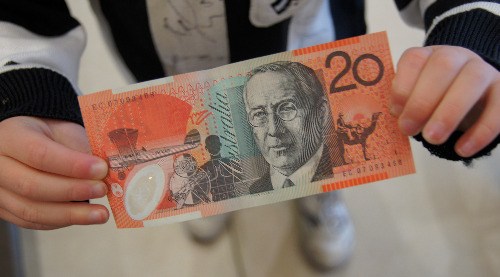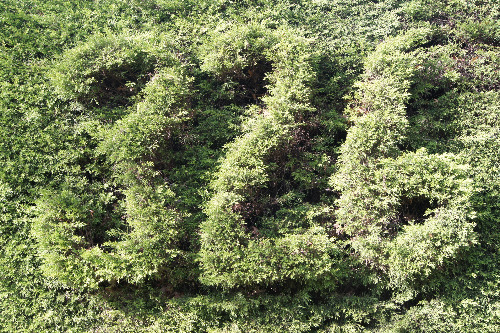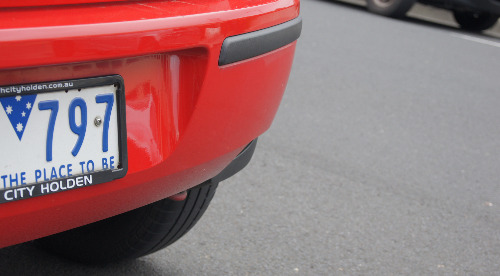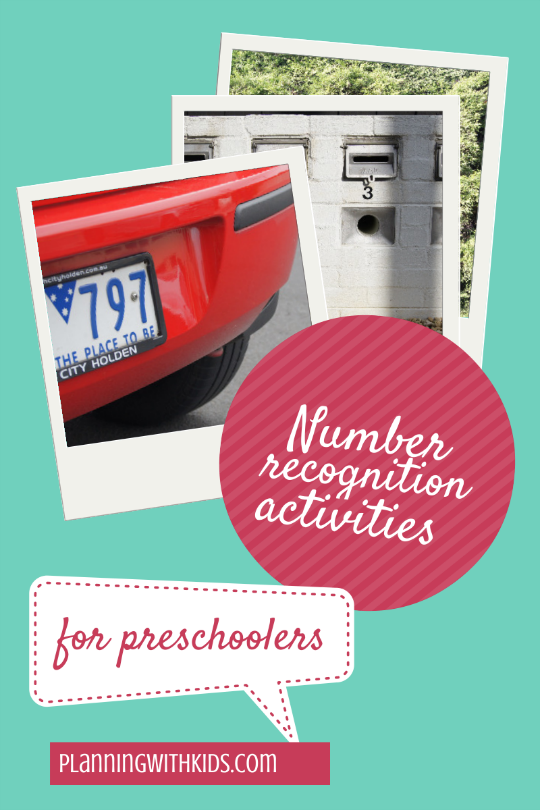Helping preschoolers to recognise and identify numbers doesn’t have to be a formal affair. Preschoolers come across numbers repeatedly in their daily life. Over the years I have learned to use these as learning opportunities, to encourage exploration of number recognition and other basic mathematical concepts.

In a very early post on this blog I wrote about 10 Preschooler Early Learning Activities You Can Plan Into Your Day. It highlighted one of my preschoolers favourite activities – The Letterbox Game. As we walk home from taking the older children to school each morning, we take it in turns to say the numbers on the letter boxes as we walk past.
 In the beginning if we saw a letter box that had a number like 20, the preschooler would say 2 – 0. As the preschooler begins to recognise more numbers beyond, 0 – 9, the game is extended and I help the preschooler learn the names of these numbers like twenty. I stay at each stage as long as the child is happy to play along. My current preschooler has a love of numbers, so loved learning number form 10 – 20 and then very quickly we were not only reading numbers on letterboxes, but anything around us that had a number on it like money and speed signs.
In the beginning if we saw a letter box that had a number like 20, the preschooler would say 2 – 0. As the preschooler begins to recognise more numbers beyond, 0 – 9, the game is extended and I help the preschooler learn the names of these numbers like twenty. I stay at each stage as long as the child is happy to play along. My current preschooler has a love of numbers, so loved learning number form 10 – 20 and then very quickly we were not only reading numbers on letterboxes, but anything around us that had a number on it like money and speed signs.

Just recently following the lead of the preschooler we have extended the game further as he wanted to know how to say “big” numbers like 326. He has always loved the hedge with the number carved into it which we walk past on the way home. It is amazing what can inspire kids to want to learn. So we starting reading the number 326 like three hundred and twenty six.

Once we had moved on to these “big” numbers, the preschooler wanted to say more big numbers, but the houses we walk past every day are generally numbered between 1 – 20. The preschooler then keenly observed, that car number plates have three numbers also, so we are now on to reading the number plates of the cars we walk past.
I love participating in my kids learning, following their lead and providing them with stimuli to fill their little minds. With numbers everywhere you look there is no need for flashcards or drilling, early numeracy can easily become just a part of your daily life.
How do you introduce number recognition to your preschooler?
More Numeracy Resources:
The 36 page PDF document – Early childhood literacy and numeracy: Building good practice is a fantastic resource for parents. While it is primarily written for use by professional practitioners in preschools and child care centres it is still a great read and resource for parents who want to support their young children’s literacy and numeracy development. It has examples which look at both literacy and numeracy concepts like:
‘Grouping things together’ is about noticing if something is the same or different
What we do and what it means
Mum: Adele, come and help Mummy with the laundry.
Adele picks up a sock.
Mum: Oh good. You’ve found the other one?Children learn to group things together when they notice if something is the ‘same’or ‘different’.
Lots of experiences with ‘same and different’ help children later on with describing how something may be different (eg has three more), rather than just how things look.
You can also try these for more inspiration on bringing maths into the everyday with your preschooler:
- Pre-number Concepts
- Parents Count Too – List of pamphlets to download from the NSW Department of Education and Training
- Literacy and Numeracy Activity Sheet (PDF) – Queensland Office for Early Childhood Education and Care

